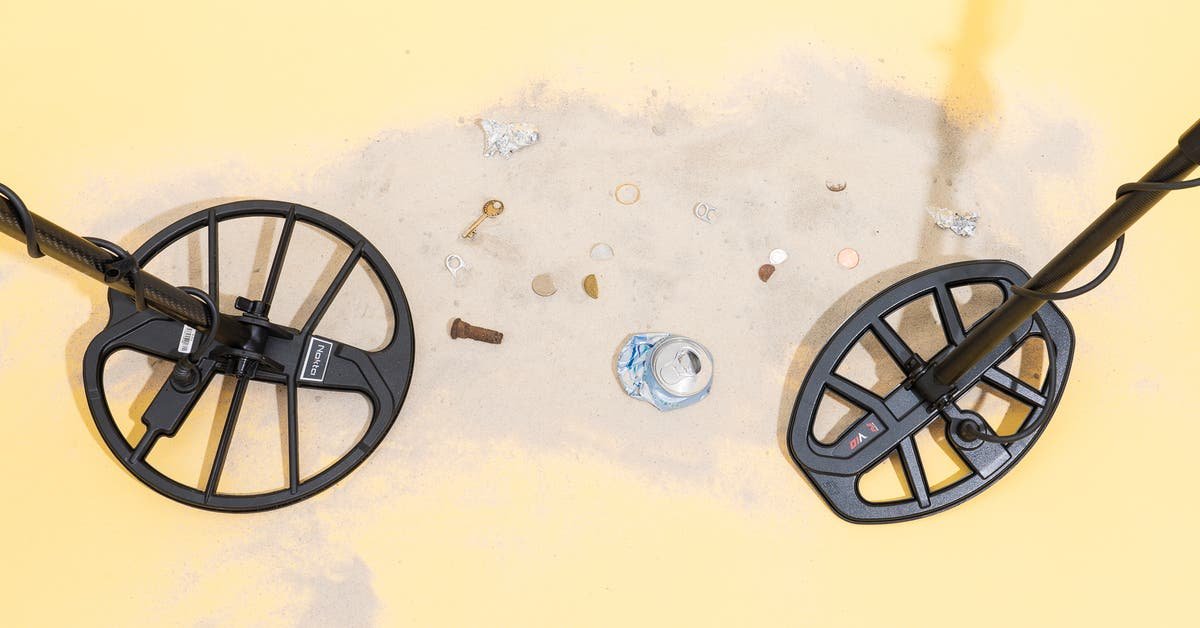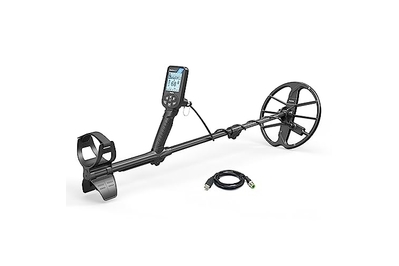
Top pick

This lightweight, ergonomic, and waterproof detector offers versatile preset modes for treasure hunting on beaches, in parks, and in the forest and field.
The Nokta Simplex BT is our pick for a first metal detector. It has four effective preset modes that are optimized for hunting on the beach, in open fields, and in parks, plus an all-metal setting that emits different tones depending on whether it’s picking up iron, precious metals, or copper and brass. It’s also fully waterproof to 16 feet, so you can use it right on the shoreline without having to worry if a rogue wave gives it a soaking.
The built-in battery lasts about 12 hours on a full charge, and you can extend that by plugging it into a portable power bank. And the machine works with Bluetooth headphones, which let you hear its beeps and bloops more clearly than through the built-in speaker and don’t get tangled like wired headphones do.
It’s extremely lightweight. The main shaft of the Simplex BT is made of carbon fiber, reducing its total weight to just 2.6 pounds. The otherwise similar Minelab X-Terra Pro has an aluminum shaft and weighs 2.9 pounds. That 5-ounce difference may not sound like a lot, but it is palpable, and it compounds quickly: In an hour-long hunt you can swing your detector to and fro a thousand times. Compared side by side with the X-Terra Pro, the Simplex BT is noticeably less tiring to use and puts less strain on the arm and shoulder.
It sees deeper into the ground than competitors. Of the three machines we tested, the Simplex BT has the largest detector coil, an 11-inch circular double-D (95 square inches). Generally speaking, a larger coil can sense objects at greater depths than a smaller one, and so it proved in our testing: The Simplex BT easily picked up a gold ring, a steel bolt, and a small piece of copper buried under 8 inches of dirt.
The Minelab Vanquish 440 (10-by-7 elliptical double-D, 55 square inches) and X-Terra Pro (12-by-9-inch elliptical double-D, 83 square inches) also picked up those items, but less clearly and strongly. Smaller coils have some advantages, including sharper pinpointing of an object’s location, but we’ve concluded that a bigger, deeper-sensing coil is better for first-time detectorists, as it can find more stuff and is more forgiving of imperfect technique.
The handle is particularly comfortable. A fully padded, ergonomic grip makes the Simplex BT less fatiguing to use than the competitors we tested. As with its low weight, that’s a big plus when you’re swinging your detector thousands of times during a hunt. The handles of the Minelab Vanquish 440 and X-Terra Pro are thinly padded and unergonomic—not uncomfortable, per se, but not as easy on the hand in comparison.
The screen is bright. Metal detecting means long days in the sun—and the rain, if you become a die-hard—and the Simplex BT’s well-lit, high-contrast LCD is easy to read even on a blinding noonday beach.
The manual is exceptionally useful. As you get more skilled at metal detecting, you’ll likely want to customize your detector’s settings. The Simplex BT’s manual is clear, detailed, and thorough, making customization, along with general setup and troubleshooting, much easier. A printed version comes in the box with the detector, tucked in a resealable bag so that you can bring it with you on hunting trips. Of course, it’s also available online, but you may find yourself without a signal out there in the never-never, or you may (like me) just prefer analog manuals to cramped screens. In any case, the Minelab detectors come with merely perfunctory quick-start booklets; the full manuals are digital-only and not as detailed.
The Simplex lineup is established and well regarded. The Nokta Simplex+ (now discontinued) was our pick in the first version of this guide, in 2022. It was new then and had few reviews, but multiple members of the Atlantic Treasure Club encouraged me to put it on my list of detectors to test, and when I told Alan Sadwin that it would be our pick, he said, “Good choice. It’s got a great reputation, and I know a lot of people who use one.” (It went on to receive hundreds of excellent reviews from both new and experienced detectorists.)
Similarly, the Simplex BT, one of the newer, second-generation models, as of mid-2024 has yet to garner extensive reviews. But between the original Simplex+’s history and our own experience with this model, we’re confident that the Simplex BT is a great choice for a first machine.
Flaws but not dealbreakers
The charging cable is an odd one, USB-A to 8-pin GX20 (I had to look that up). Not an easy item to replace if you lose it. On top of that, the Simplex BT comes without a charging adapter, so you may need a USB-A–to–C dongle to hook it to an existing power source.
Nokta covers the Simplex BT with a three-year warranty, but some owners complain of poor or unreachable customer service from the company; it’s based in Turkey, which at the least introduces a time difference that can make communication slow. Many online and brick-and-mortar detector shops carry the Nokta lineup, and they may be the more effective route for getting your machine checked and fixed if necessary.





